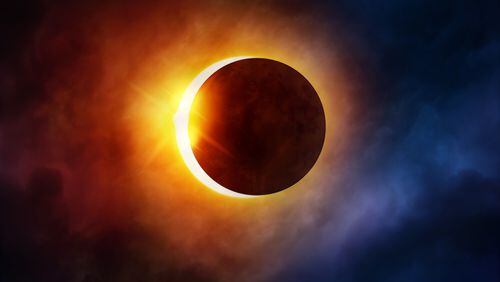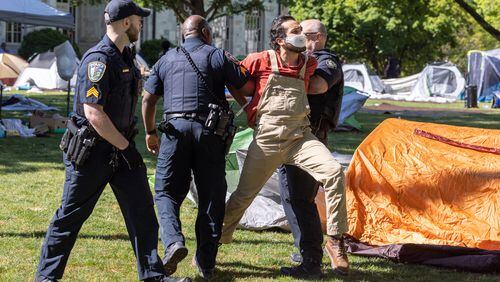The upcoming solar eclipse in August bids to be more than a rare celestial event — it could meld the increasingly pervasive world of smartphone apps with a total eclipse visible from sea to shining sea.
At least 15 free apps that focus on the eclipse are available for Android phones, iPhones, or both. They’ll help you find your way to spots where you can experience the eclipse from within the dark path of the moon’s shadow, learn photography techniques, read about solar eclipses, connect to live-streamed telescope views, and more.
Although other eclipses have occurred in the information age, this time the so-called Great American Eclipse will offer a coast-to-coast solar eclipse in the United States, home to the world’s largest technology companies and social networks.
“You have a total eclipse across the entire United States at the same time you have so much social media, in a country that consumes and distributes information like no other,” said Dan McGlaun, a veteran eclipse chaser and web master for eclipse2017.org. He is an Indiana-based expert who has developed and distributed a free app for the eclipse.
One popular feature of eclipse apps enables people to ascertain the path of totality — a relatively narrow band across the United States within which people can experience the eerie darkness of being inside the moon’s shadow when it completely obscures the sun. This is crucial information for those who want to find their way into the moon’s shadow, because the total eclipse will last only two to three minutes at any given location.
“The shadow in the path of totality is only a few miles wide; it’s quite a narrow track,” said Paul Lynam, a staff astronomer with the Lick Observatory in San Jose that’s operated by UC Santa Cruz.
One comprehensive app is McGlaun’s eclipse2017.org app, available for both Android phones and iPhones. The primary feature allows people to choose a location on a map of the U.S. to find out whether it is in the path of totality. If the spot chosen is outside the path of maximum darkness, a user can determine how much of the sun will be covered during the eclipse.
“I have never witnessed a total solar eclipse,” Lynam said. “It is reputed to be quite an enriching experience to go; that is why people spend time and money to see these things. You have that twilight effect during the totality, the brightest stars come out, the local flora and fauna react to the total eclipse.”
The Smithsonian Institute offers an app with an eclipse countdown measured by days, weeks, hours, minutes and seconds until the eclipse moment; a NASA eclipse live stream; the eclipse path across the United States; an interactive eclipse sky map; an interactive map showing the moon’s shadow passing over the nation; basic information about solar eclipses; and a safety guide.
The Total Solar Eclipse app, developed by San Francisco’s Exploratorium for Android phones, iPhones and tablets, is also rich in features. It offers “sneak peeks” that display not only the path of totality, but also adjacent bands of lesser coverage of the sun’s disk. The app also has connections to live-streams of telescope views from Wyoming and Oregon.
Other apps
EclipseFlite for the iPhone. The app provides the most ideal airport locations to view the event on Aug. 21. It also suggests the best locations to view the total eclipse in the U.S., depending on weather that day.
Solar Eclipse Timer for both iPhone and Android. This app offers a talking commentary, timed to the local eclipse event, to people who have chosen a location so users can be "talked" through the eclipse. The app states it is designed for "first-time observers; expert eclipse chasers; professional photographers; teachers; families; children."
Totality app by Big Kid Science for Android lets people determine whether trees or mountains might be likely to obscure a view of the eclipse.
Eclipse Megamovie Mobile for Android allows people to take pictures of the eclipse and relay the images to a team at UC Berkeley, to help astronomers compile photos of the Great American Eclipse while it's in progress.
Some apps will suggest phone and other camera techniques so people can obtain excellent pictures of the eclipse.
The bottom line is that the Great American Eclipse has a lot of people talking and seeking ways to observe the eclipse, either in the path of totality or one of the outlying areas where three-fourths or more of the sun might be obscured by the moon.
“People are absolutely excited about this,” said Bill O’Neil, director of solar observing, education and outreach for the San Jose Astronomical Association. “It will get a lot of people thinking outside of the box, raise interest regarding science in general, and people will be able to use apps to enhance the experience.”






